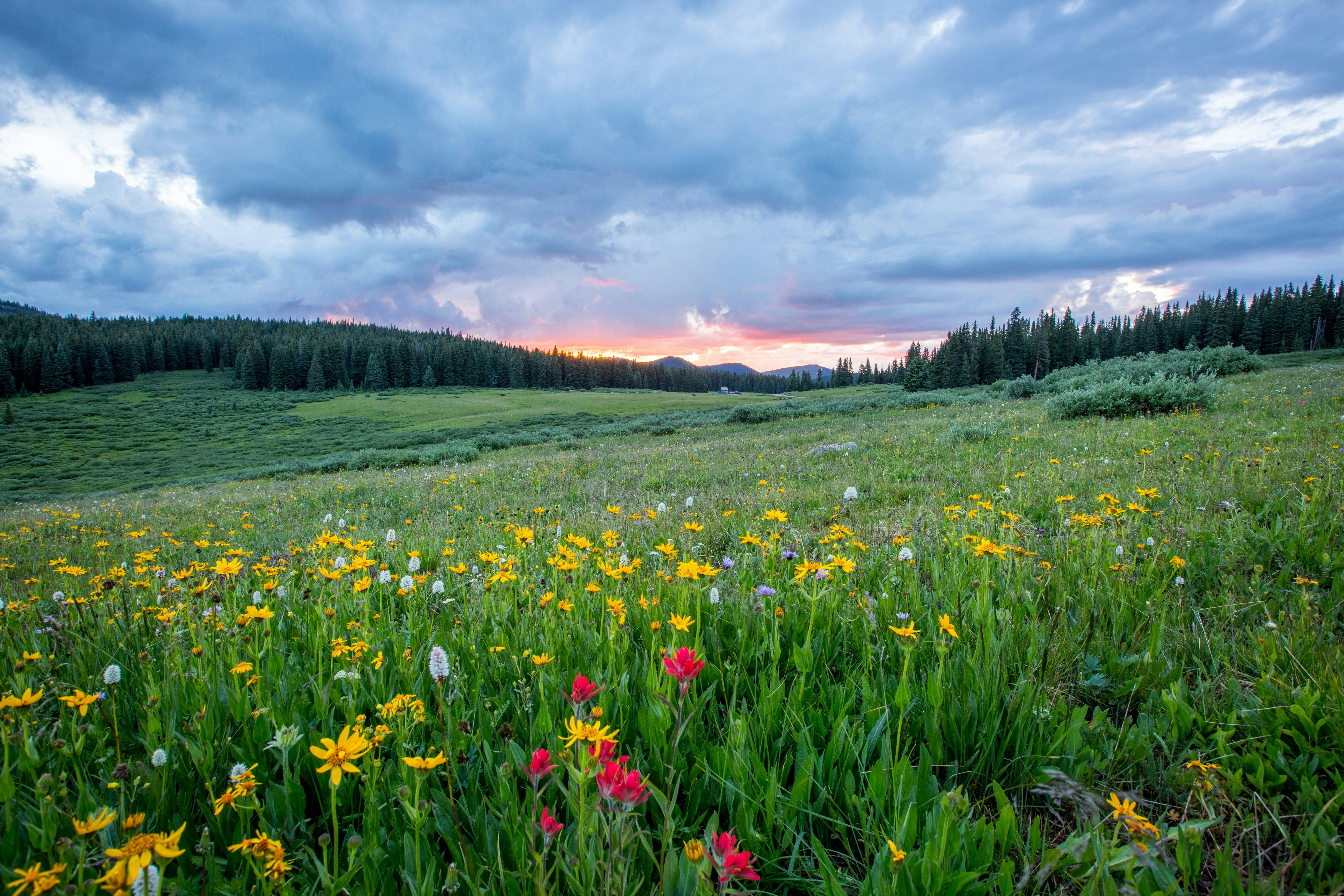Immersive Education in Nature: A Personalized Approach Stimulating Awe and Wonder
TransformingChildren's Learning: The Benefits of Nature Immersion Education
Stepping off the traditional classroom floor and into the great outdoors can significantly alter the trajectory of a child's education, fostering deeper connections with academic concepts and enhancing emotional development. By blending the power of outdoor experiences with personalized learning approaches, educators create an environment that adapts to each student's unique learning style while sparking curiosity, exploration, and discovery.
The benefits of nature-based learning are substantial. By providing a rich, multisensory environment, the outdoor classroom becomes a living laboratory where subjects like mathematics, science, language arts, and social skills intertwine seamlessly through real-world experiences. This approach empowers educators to customize lessons based on each student's interests, abilities, and developmental needs.
Unveiling Nature-Based Learning
At its core, nature-based learning integrates outdoor environments into educational experiences, providing students with intentional engagement with natural settings that, in turn, transform forests, trails, gardens, and natural spaces into immersive, dynamic classrooms. Through hands-on activities like wildlife observation, plant identification, and environmental stewardship, students develop core academic skills while exploring, observing, and interacting with their surroundings.
Numerous studies have demonstrated the positive effects of outdoor learning on student outcomes across multiple domains:
- Improved focus and attention spans
- Enhanced critical thinking and problem-solving skills
- Greater physical activity and motor development
- Stronger emotional regulation and stress management
- Better social skills and peer collaboration
- Deeper understanding of environmental systems
- Greater creativity and imagination in learning tasks
Offering tangible contexts for abstract concepts and adapting to students' individual learning styles, the daily integration of nature experiences provides a foundation for teachers to build upon, fostering academic success.
Designing Personalized Learning Journeys in Nature
Nature provides an ideal canvas for crafting education tailored to each student's unique needs and interests. To create a truly transformative learning environment, outdoor spaces must be carefully designed to accommodate individual learning journeys.
Adapting Activities to Learning Styles
In the spirit of personalization, design nature-based activities that cater to different learning preferences. For visual learners, consider activities like nature journaling or plant identification, while kinesthetic learners might flourish with hands-on activities, such as building shelters or creating nature art. For auditory learners, bird call identification and storytelling circles under trees may be more engaging. By matching tasks to students' strengths, you can gently encourage growth in other areas through multisensory learning experiences.
Catering to Age Groups
To ensure learning remains challenging and engaging for all students, nature-based lessons must be structured based on developmental stages. For preschoolers, focus on sensory exploration like texture walks and leaf collecting, while elementary students tackle scientific concepts through guided investigations and weather tracking. Middle schoolers can lead conservation projects, conduct field research, and analyze ecosystems, while high school students design environmental studies, write nature-inspired poetry, and develop sustainability solutions.
Merging Core Academic Subjects with Outdoor Learning
By intentional integration of nature into traditional academic subjects, educators can ignite a passion for learning that transcends the classroom walls. Reflecting on the Enrichment Data, explore how mathematics, science, language arts, and social studies can be woven into the fabric of nature-based learning.
Mathematics in Natural Settings
Turn your outdoor space into a vibrant math laboratory by making numbers come alive naturally. Examples include counting tree rings to establish growth patterns and calculating ages, measuring plant heights with standard or non-standard units for a grasp of measurement concepts, creating geometric shapes with natural materials, and plotting garden beds for area and perimeter calculations.
Science Through Nature Exploration
Nature walks offer boundless opportunities for scientific discovery, inspiring curiosity and critical thinking in students. For instance, observing plant life cycles through seasonal changes, documenting growth patterns, studying weather systems by tracking cloud formations, wind patterns, and precipitation levels, and collecting soil samples to analyze composition. Additionally, students can create field guides of local flora and fauna, design experiments to test environmental factors, and analyze the effects of light exposure, temperature, or soil moisture on plant growth.
Language Arts in the Great Outdoors
The inimitable beauty of nature provides an endless stream of inspiration for enhancing reading, writing, and vocabulary development. Encourage students to write descriptive passages about observed wildlife, create detailed field notes and nature poetry, practice storytelling using natural settings as backdrops, read nature-themed literature outdoors, and establish nature vocabulary lists based on seasonal discoveries and ecological relationships.
Developing Essential Life Skills Through Nature Immersion
In addition to the academic advantages, nature immersion offers unique opportunities for students to develop crucial life skills that extend beyond the classroom.
Building Problem-Solving Abilities
Nature-based education fosters critical thinking through engaging students in authentic problem-solving scenarios, such as shelter building, trail navigation, and weather adaptation. As students develop their skills in assessing situations, they sharpen their ability to make informed decisions while gaining confidence in their problem-solving abilities.
Fostering Environmental Stewardship
Regular nature immersion cultivates a deeper connection to the environment, turning students into active environmental stewards. By participating in conservation projects, maintaining trail systems, monitoring local wildlife, and contributing to citizen science initiatives, students learn the importance of environmental protection and conservation. Playing a role in preserving our natural world instills a sense of responsibility and increases the likelihood of continued environmental advocacy.
Enhancing Social-Emotional Growth
Outdoor learning environments encourage the development of social and emotional skills through team collaborations, communication, leadership roles, and emotional regulation. Studies indicate that children participating in nature immersion programs show a 30% improvement in social skills and emotional awareness compared to those receiving traditional, indoor-only education.
Implementing Nature-Based Assessment Methods
As educators strive to evaluate student progress in nature-based learning, innovative approaches to assessment are essential to capture authentic growth and development in outdoor settings.
Portfolio Development
Demonstrating student growth can be achieved by curating multimedia portfolios, including student-created field guides, nature journals, and documented project outcomes. Organize collections by season, subject area, or learning objectives to track progression and reflect on accomplishments. Platforms like Seesaw or Google Sites can be utilized to create interactive, digital portfolios.
Observation-Based Evaluation
Implement structured observation checklists focused on specific learning objectives, tracking behaviors like scientific inquiry, environmental stewardship, and problem-solving during outdoor activities. Use rubrics designed for nature-based competencies to assess growth in areas like species identification, ecological understanding, and outdoor safety skills.
Progress Tracking in Outdoor Settings
Hands-on demonstrations of nature-based competencies, such as plant identification or weather prediction, can be employed to evaluate progress and mastery of outdoor skills. Create achievement badges or digital credentials for mastering specific outdoor skills and knowledge areas. GPS-enabled apps can map student exploration patterns and document field research locations, while individual progress charts reflect both academic growth and development of environmental literacy through quantifiable metrics and qualitative observations.
Overcoming Challenges in Nature-Based Education
Nature immersion offers a wealth of educational benefits; however, some challenges must be addressed to ensure its successful implementation:
Addressing Weather and Seasonal Considerations
Create flexible learning schedules that adapt to seasonal patterns and weather conditions to maximize learning opportunities. Implement indoor-outdoor rotation systems during extreme weather, using covered spaces and appropriate gear, such as rain suits, waterproof boots, and portable shelters. Include backup activities that bring nature indoors to ensure continuity during challenging weather.
Ensuring Safety
Establish safety protocols that include regular site assessments, first aid training, and emergency procedures. Set clear boundaries, maintain appropriate adult-student ratios, and organize backup activities in case of emergencies. Equip students with safety equipment, such as emergency kits and knowledge of how to identify and avoid potential hazards, such as poison ivy.
Managing Resources
Develop partnerships with local nature centers, parks, and environmental organizations to access diverse learning environments. Establish resource kits with essential tools, build a lending library of outdoor education materials, and share resources digitally to maximize resource efficiency. Adopt sustainable practices in material use, such as using reusable containers, washable art supplies, and following leave-no-trace principles.
Supporting Special Needs Through Nature Immersion
Nature immersion offers unique advantages for students with special needs, providing tailored sensory experiences and therapeutic benefits in a natural setting.
Sensory Learning Opportunities
Nature provides a rich, multi-sensory environment that caters to diverse learning needs. Students can explore different textures through tree bark, leaf surfaces, and soil types, while natural soundscapes offer auditory stimulation. Visual learners benefit from observing seasonal changes, plant life cycles, and wildlife behaviors. The varied sensory inputs help students with sensory processing differences regulate their responses while engaging with educational content in a low-pressure environment.
Therapeutic Benefits of Nature
For students with special needs, nature immersion reduces anxiety, improves focus, and promotes emotional health. Outdoor experiences offer a calming, predictable yet dynamic environment that encourages self-regulation, emotional processing, and stress relief. Participating in activities such as rock climbing, nature art, and gardening encourages the development of motor skills, along with opportunities for building emotional resilience and social skills.
Building a Nature-Focused Curriculum Framework
To create an effective nature-based curriculum, educators must balance structured learning with natural exploration. Set learning objectives that align with academic standards yet maintain flexibility for spontaneous discoveries. Adopt flexible schedules, track student progress using digital portfolios and observation-based evaluation methods, and measure success through project-based assessments.
Embrace nature immersion to transform the learning experience, adapting to each student's unique needs and learning styles. Step outside the classroom walls and embrace the possibilities that the natural world offers. Through nature-based education, you will revolutionize how students learn and grow, fostering a deeper connection to the natural world and nurturing vibrant, curious, and well-rounded individuals.
In the innovative fusion of education and self-development, nature-based learning offers a unique approach to public speaking by providing students with hands-on, real-world experiences that enhance their communication skills through storytelling, presentation, and shared observations. By utilizing natural settings as an immersive, dynamic classroom, learners develop confidence in their public speaking abilities while fostering a deeper understanding of academic concepts.
Furthermore, nature-based learning fosters intentional engagement with natural settings, embracing learning as an ongoing process that transcends traditional academic subjects. Through personalized learning journeys that cater to individual learning styles and adapt to different age groups, educators can help students learn and grow, ultimately empowering them to become lifelong learners and advocates for their environment.




